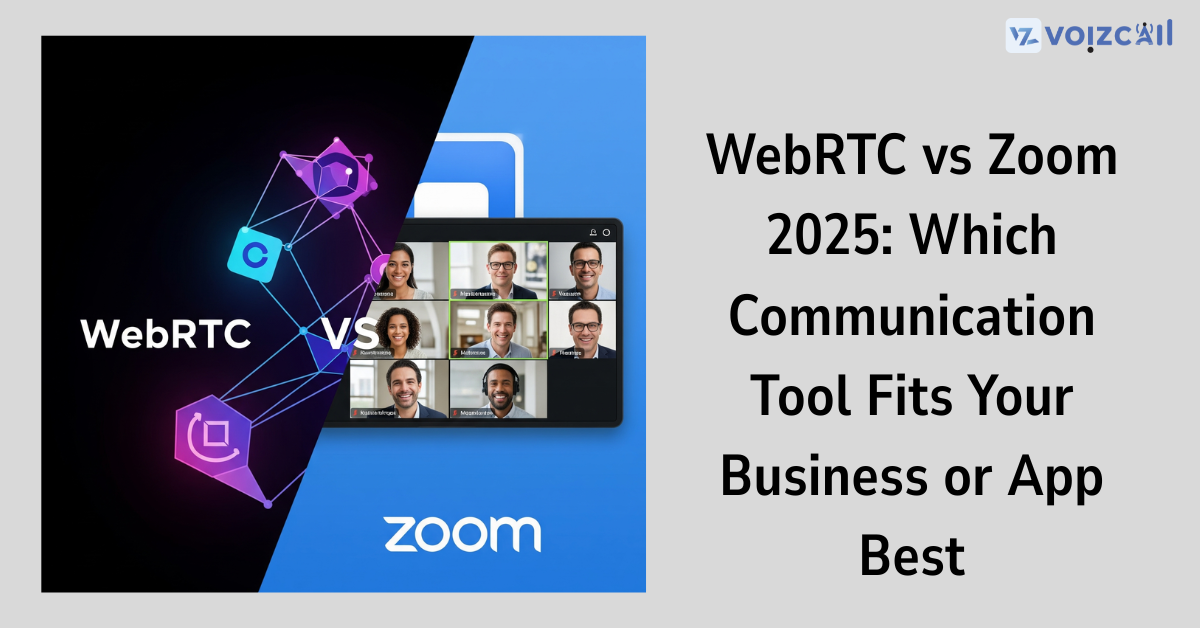


15/Jul/2025
Year 2025 has arrived when real-time communication is no longer a luxury, it is a need. You might be building a video calling app, a remote-first organization or enhancing the customer support section; having the right communication tool can be a grand success or outright failure. WebRTC and Zoom can be the first two names in the list.
So how do you come to know which one is appropriate for your app or business?
So how does the process work? Let's bring it down to the most fundamental levels, even non-tech ones.
Contents Table
1. What is it in WebRTC?
2. So what is zoom?
3. WebRTC vs Zoom: The Differences Yet to Come
4. When WebRTC Should be applied
5. Time to Choose Zoom
6. App Developers WebRTC vs Zoom
7. Final Thoughts
Call / Email for Sales Inquiry Today
Web Real-Time Communication (WebRTC) is an open-source, royalty-free technology that allows real-time media (video, audio and data) communications via the web browser and mobile-app-without a plug-in.
Important Characteristics of WebRTC:
Peer-to-peer communication
Works within browsers and mobile apps
Completely customizable
Low latency voice and video calls
Great for integrating communication into your own platform
Common uses: video-conferencing apps, remote medicine, tutoring and call centers.
Zoom is a cloud video conferencing solution that is now a household name. It provides plug-and-play capabilities for meetings, webinars, and team collaboration—no coding needed.
Zoom Key Features:
Simple-to-use video conferencing
Supports thousands of participants
Embedded chat, screen share, and recording
Webinar hosting and team rooms
Enterprise secure and scalable
The applications: team meetings, webinars, virtual classrooms, enterprise video calls.
WebRTC vs zoom: major differences
Feature WebRTC Zoom
Setup Takes custom development Ready-to-use platform
Customization Completely customizable Limited
Cost Free to use (self-hosted) Paid plans required
Integration Deep integration into apps Basic integrations (via SDK/API)
Latency Lower latency (P2P) Higher latency (cloud servers)
Security customizable 3rd-to-end encryption AES 256 bits encryption
When WebRTC Should be Usable
Use WebRTC when you are:
Have to add your own video calling option to your application
Require complete control over the user experience
Seek storage of low-latency and scalable peer-to-peer communication
Do not want long-term issue of licensing fees
Seeking a browser agnostic device independent open-source solution
Ideal programmers, startups, and SaaS companies.
When to Choose Zoom
Choose Zoom if you:
How do you need a fast video meeting solution?
Need some enterprise features such as webinars, breakout rooms, and cloud recording
Lack in house development resources
Seeking a solid, and reliable platform that millions are using?
Ideal to use in business, schools, and big teams.
WebRTC vs Zoom for App Developers
If you’re building an app or software solution, WebRTC offers:
Developer-friendly APIs
Connection with Back-end applications such as Node.js, Asterisk, OpenSIPS
Freedom to create unique user experiences
Potential to connect with SIP and VoIP platforms
Zoom does provide SDK, but it is less flexible and it is put more on embedding pre-built components.
Final Thoughts: Which of the two Best Fits Your Needs?
In case you are a business that needs a ready-made video conferencing tool, you should resort to Zoom.
However, when developing an app or when you intend to add real-time communication capabilities to your platform with more ferment and more control, WebRTC is a more sensible choice by 2025.